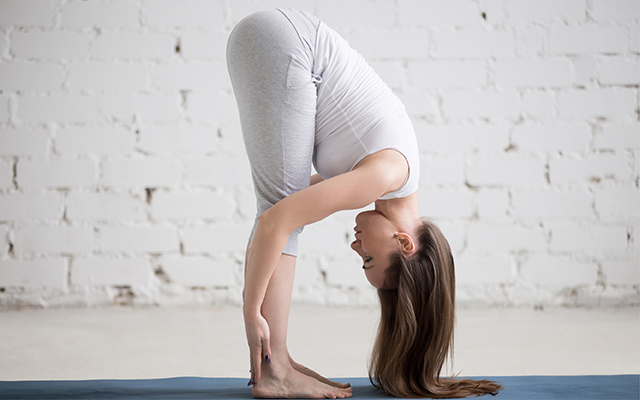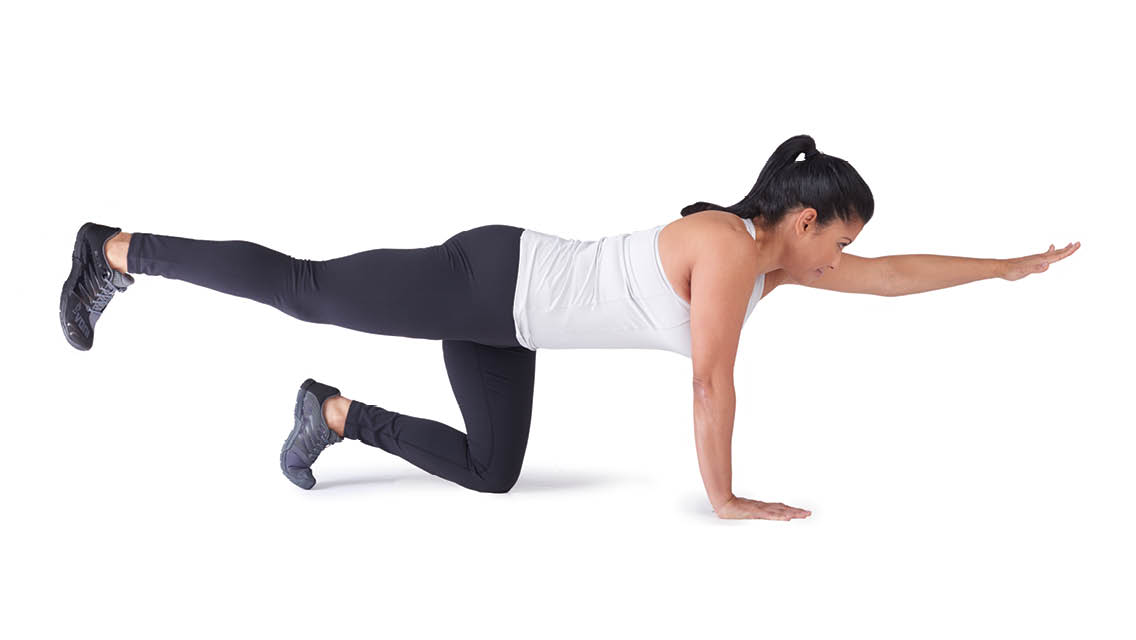Lumbar lordosis is the natural inward curve of the lower spine, necessary for lending balance to the body and absorbing shock. But too much, a common condition called hyperextension or swayback, can be problematic, says Erika Mundinger, PT, a physical therapist at Rehab One/Orthopaedic and Fracture Clinic in Faribault, Minn. “It can contribute to lower-back pain and abdominal and core weakness, and can lead to spine disorders such as spondylosis [forward slipping of vertebrae], arthritis and degenerative disc disorder [degeneration of the fluid-filled discs that cushion the spine].”
Common causes are:
- Skeletal build: Some people are born with more curvature than others.
- Obesity: A large abdomen will cause the body’s center of mass to shift forward, pulling on the lower spine.
- Muscle imbalances: Weak abdominals can cause the spine to hyperextend to maintain upright posture; tight hip flexors can pull the front of the pelvis downward; and weak hamstrings won’t pull the back of the pelvis backward enough. Any of these will increase lordosis.
Fixing the Curve
If you feel pain in your lower back, have a physical therapist, chiropractor or other health expert assess your spine to determine any postural deficits.
The Self-Test
Stand with your feet a few inches from the wall with your buttocks, back and shoulders resting against it. Place your hand into the curve of your lower back. If you can place more than a hand into the space between the small of your back and the wall, you may have excessive lordosis.
The Solution
The first step is to be aware of your posture and engage your abs at all times. If obesity is a contributor, weight loss is important. Mundinger also recommends strengthening the core and the hamstrings, and stretching the hip flexors to improve posture. The following exercise can be very helpful.
Pelvic Tilt
- Lie on your back with both knees bent.
- Brace your abdominal muscles, then tilt your pelvis backward so your entire lumbar spine presses into the floor. Relax to the start position. That’s one rep. (Picture that you’re trying to squish grapes between your back and the floor.)
- Move very slowly to ensure you’re getting a strong abdominal contraction.
- This exercise is gentle enough to do every day, and you can choose the exact number of sets and reps. If in doubt, start with three sets of 10 to 20 reps three days a week, and advance as pain and strength allow.
- Make it harder by simultaneously raising one leg a few inches off the floor (but only do this if you can perform the exercise entirely pain free!).
- Results vary, but you should see decreased pain within a week. Within a few weeks, you should notice improved posture. (If you don’t, see a healthcare provider.)





This Post Has 0 Comments